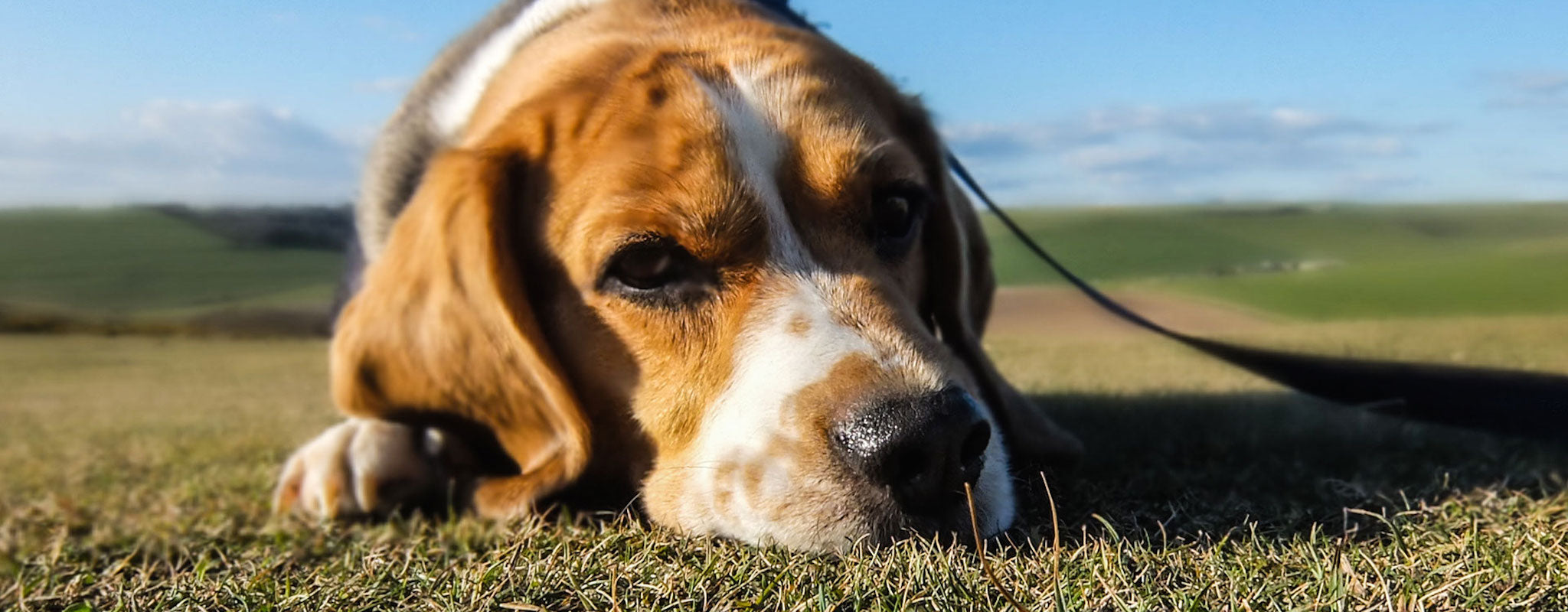All dogs are covered with a fluffy fur coat to keep them warm and toasty right? Well, the answer is a bit more complicated than that. Dogs can suffer from hypothermia and frostbite just like we do. The truth is that a dog’s ability to withstand the cold varies depending on age, breed, health status and the environment they’re used to. So as temperatures drop, we have to give our furry best friends a little extra TLC to make sure they stay safe and comfortable. The good news is we’ll be sharing what you need to know to prepare your dog for those frosty winter days.

Not all dog breeds are cut out for winter’s chill. A dog’s cold tolerance will vary depending on their coat, body fat stores, activity level, and health. Some dogs have been bred to brave the cold, such as Huskies, Alaskan Malamutes, and Samoyeds. These dogs feature thick double insulating coats and bushy tails often combined with smaller ears to prevent frostbite. They have wide paws covered with snow repellent fur. A general guideline is the longer and thicker the coat, the better prepared your dog will be to face the cold.

Small, toy, and miniature shorthaired breeds don’t generate or retain enough heat to keep warm in the winter. The same is true for dogs that sit low to the ground, such as the Welsh Pembroke Corgi. Their bellies are low enough to brush up against snow and ice rendering them vulnerable. Lean shorthaired breeds like the greyhound may also benefit from donning some winter apparel.

Age also plays a part, as older dogs tend to fall prey to health conditions such as arthritis, weakened immune systems, and declining internal organ health, which has a tremendous impact on a dog’s ability to regulate heat. Puppies are generally smaller and have less insulating fat and muscle mass so they too have a tough time regulating their body temperature. Once the weather gets below 30°F or -1°C, a puppy’s outdoor time should be limited.

While coats may seem like an unnecessary accessory, many dogs will benefit from an extra layer to help them stay toasty. Look for coats that protect the neck and belly. The fit should be snug but not too tight. If your dog’s movement is restricted, seek out a more comfortable fit.

Though not all dogs will be comfortable wearing an extra layer. Some dogs feel trapped by garments and may refuse to go outside if they’re wearing any. For dogs that persist in their resistance to wearing clothing, limiting their time outside for the benefit of your dog’s health is strongly recommended. Shivering may be a telltale sign that your dog is ready to come inside, regardless of how long they’ve been outside.

What to know about walking your dog in winter
If your dog is used to the warmth of the indoors, the drop in temperature can be quite a shock. Dogs can experience frostbite, particularly on their earflaps and tail tips. Even big fuzzy dogs that live indoors will need time to acclimate. Short walks and quick bathroom trips will help your dog get accustomed to the winter weather. Be wary of thin ice. Even if ice is thick enough your dog could slip tearing a muscle or spraining a tendon or ligament.

Protect your pup’s paws
City sidewalks and roads are often sprinkled with rock salt and antifreeze which contain chemicals that are poisonous to dogs. Rock salt can get stuck and chap your dog’s paws and may also burn the skin. For long-haired dogs, it’s a good idea to keep the bits of fur in between your dog’s toes well-trimmed to prevent ice balls from forming between the pads and toes. Consider dog booties for an extra layer of protection or use a washcloth dipped in warm water to wash your dog’s paws. These extra accessories are far more than a fashion statement and can make a world of difference in keeping your pup safe and comfy. Also, dogs that stay indoors, city dogs, small dogs, etc., won’t have the thick calluses on their paws that outdoor dogs will. The lack of calluses makes them more sensitive and prone to cold and chemical irritants. Paw moisturizer can help soften and protect your dog from the elements.

Keeping your dog cozy indoors and outdoors
Whether your dog spends most of its time indoors or outdoors, a few changes will ensure your dog is protected from the elements. If you keep your dog outdoors, a sturdy outdoor structure, preferably elevated to minimize heat loss, will provide shelter from the rain, snow, and strong winds. A roomy doghouse might seem like the most comfortable option for your dog, but shelters that are too big will be too drafty and won’t allow the space to fill up with your dog’s body heat. If you already purchased a large doghouse for your puppy to grow into, place a puppy-sized dog crate lined with a blanket in the doghouse until your pup has grown enough to fill up the larger space. For maximum comfort and warmth, line the bottom with some bedding, insulate the walls, and provide a door that can close (but ensure a vent is available for fresh air). A thick dry blanket or dog bed will do just the trick. Clean it every few weeks to prevent odors. Also, be sure your dog has plenty of unfrozen water to drink. A pet-safe heated water bowl can help prevent freezing over.

Extra Warmth
Make sure your dog has a nice cozy spot to sleep in away from any drafty air. It might seem like a great idea to place your dog’s bed near a heater or radiator, but this can cause overheating and discomfort. Also, be cautious when using space heaters as dogs can get too close and burn themselves or even accidentally knock the heater down causing a fire. If you have an older dog with joint conditions, a thick memory foam bed could help them stay warm and provide extra support. To keep your puppy warm, you can add extra blankets that they can burrow into or just add a thick fleece blanket.

Humidity
Some dogs suffer from winter skin dryness making a spot next to the heater less than ideal. Adding some extra humidity to your home can go a long way for your pet’s health and comfort.

Toxic Hazards
If your dog likes to explore and hang out in your garage, ensure that antifreeze, batteries, deicers, and cleaning products are stored safely out of reach. All of these items are toxic to dogs and even in small amounts can cause serious harm. Call your vet as soon as possible if you think your dog has ingested anything toxic.



